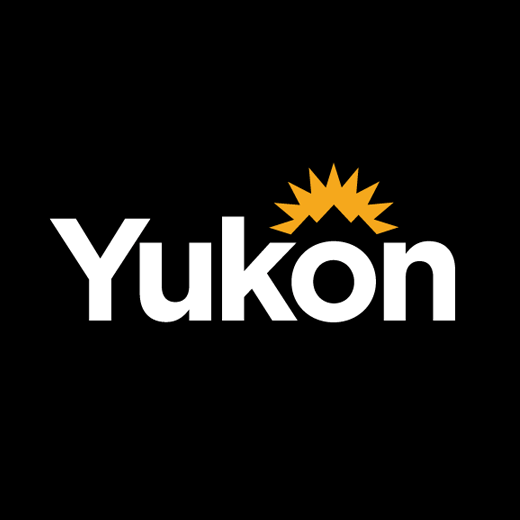geoyukon
Type of resources
Topics
Keywords
Contact for the resource
Provided by
Years
Formats
Representation types
Update frequencies
status
Service types
-

Yukon Environmental and Socio-economic Assessment Act (YESAA) Assessment District boundaries. This data set was created at a scale of 1:250,000 from metes and bounds provided in the "MINISTERIAL ORDER ESTABLISHING ASSESSMENT DISTRICT BOUNDARIES PURSUANT TO SECTION 20(1) OF THE YUKON ENVIRONMENTAL AND SOCIO-ECONOMIC ASSESSMENT ACT". Distributed from [GeoYukon](https://yukon.ca/geoyukon) by the [Government of Yukon](https://yukon.ca/maps) . Discover more digital map data and interactive maps from Yukon's digital map data collection. For more information: [geomatics.help@yukon.ca](mailto:geomatics.help@yukon.ca)
-

Icefields captured at 1:1,000,000 scale from Digital Chart of the World data for the Yukon and surrounding area. Distributed from [GeoYukon](https://yukon.ca/geoyukon) by the [Government of Yukon](https://yukon.ca/maps) . Discover more digital map data and interactive maps from Yukon's digital map data collection. For more information: [geomatics.help@yukon.ca](mailto:geomatics.help@yukon.ca)
-

Borders captured at 1:1,000,000 scale from Digital Chart of the World data for the Yukon and surrounding area. Distributed from [GeoYukon](https://yukon.ca/geoyukon) by the [Government of Yukon](https://yukon.ca/maps) . Discover more digital map data and interactive maps from Yukon's digital map data collection. For more information: [geomatics.help@yukon.ca](mailto:geomatics.help@yukon.ca)
-

1:50,000 NTDB Utility Features Line Based on Edition 2.x. Distributed from [GeoYukon](https://yukon.ca/geoyukon) by the [Government of Yukon](https://yukon.ca/maps) . Discover more digital map data and interactive maps from Yukon's digital map data collection. For more information: [geomatics.help@yukon.ca](mailto:geomatics.help@yukon.ca)
-

Line information containing elevation isobars to aid in the depiction of changes in elevation at 1:1,000,000 scale. (eg. mountain peaks or depressions). Contour lines captured at 1:1,000,000 scale from Digital Chart of the World data for the Yukon and surrounding area. Distributed from [GeoYukon](https://yukon.ca/geoyukon) by the [Government of Yukon](https://yukon.ca/maps) . Discover more digital map data and interactive maps from Yukon's digital map data collection. For more information: [geomatics.help@yukon.ca](mailto:geomatics.help@yukon.ca)
-

The Yukon Geological Survey stores a significant amount of geological information gathered by exploration companies in compliance with the Quartz Mining Act. This information is primarily contained in assessment reports (AR). Since 1920, more than 8000 hardrock assessment reports have been collected, with more than 6000 of these containing geochemical data on surficial samples (e.g., soil, rock, stream sediment, and vegetation). The sheer volume and historical depth of these data provide valuable insight into the mineral potential of the Yukon. Exploration companies rely on data from ARs to search for exploration targets. To aid exploration companies, YGS has developed this database to consolidate geochemical data extracted from assessment reports. This database, the Geochemical Assessment Report Data Extracted database (GARDEd), was created by extracting and compiling data from more than 300 assessment reports. GARDEd was initially populated with data from samples within a 75 km radius of the Casino deposit to evaluate the data extraction procedures and assess the feasibility of the database. Data capture focused on recent ARs because these were available in digital format. The initial release of this database contains approximately 10% of the geochemical data from surface samples within Yukon ARs. YGS encourages users to send feedback to [geology@yukon.ca](mailto:geology@yukon.ca) to assess the usefulness of the dataset and determine how much effort should be invested to capture older, non-digital ARs. Distributed from [GeoYukon](https://mapservices.gov.yk.ca/GeoYukon/) by the [Government of Yukon](https://yukon.ca/) . Discover more digital map data and interactive maps from Yukon's digital map data collection. For more information: [geomatics.help@yukon.ca](mailto:geomatics.help@yukon.ca)
-

Cartographic representation of the Geographic Latitude / Longitude graticule at 1 degree intervals, including the Arctic Circle. This dataset was imported from the National Atlas of Canada from Natural Resources Canada at 1:2,000,000. Distributed from [GeoYukon](https://yukon.ca/geoyukon) by the [Government of Yukon](https://yukon.ca/maps) . Discover more digital map data and interactive maps from Yukon's digital map data collection. For more information: [geomatics.help@yukon.ca](mailto:geomatics.help@yukon.ca)
-

Roads captured at 1:1,000,000 scale from Digital Chart of the World data for the Yukon and surrounding area. These roads were compared to the Government of Canada's National Road Network (NRN) and Yukon Government's existing orthoimagery to determine the validity of each road. New roads were generalized from the NRN, old roads were attributed out. Distributed from [GeoYukon](https://yukon.ca/geoyukon) by the [Government of Yukon](https://yukon.ca/maps) . Discover more digital map data and interactive maps from Yukon's digital map data collection. For more information: [geomatics.help@yukon.ca](mailto:geomatics.help@yukon.ca)
-

Yukon Community points were derived from the CSW_BASE.PLACE_PT_1M data that originally came from the 1:1,000,000 scale Digital Chart of the World dataset. It is derived based on Major Cities and Communities in the Yukon. Distributed from [GeoYukon](https://yukon.ca/geoyukon) by the [Government of Yukon](https://yukon.ca/maps) . Discover more digital map data and interactive maps from Yukon's digital map data collection. For more information: [geomatics.help@yukon.ca](mailto:geomatics.help@yukon.ca)
-

Electoral districts as defined by the "Electoral Districts Boundaries Act" (SY 2008, c. 14) as amended. The linework was created by interpreting the "Electoral Districts Boundaries Act" (SY 2008, c. 14) using thethe 1:50 000 scale national topographic database data (NTDB), National Road Network (NRN), City of Whitehorse feature dataset and the legal survey of Canada data where applicable. Electoral Districts revised July 2015. Distributed from [GeoYukon](https://yukon.ca/geoyukon) by the [Government of Yukon](https://yukon.ca/maps) . Discover more digital map data and interactive maps from Yukon's digital map data collection. For more information: [geomatics.help@yukon.ca](mailto:geomatics.help@yukon.ca)
 Arctic SDI catalogue
Arctic SDI catalogue